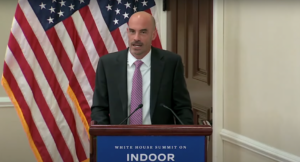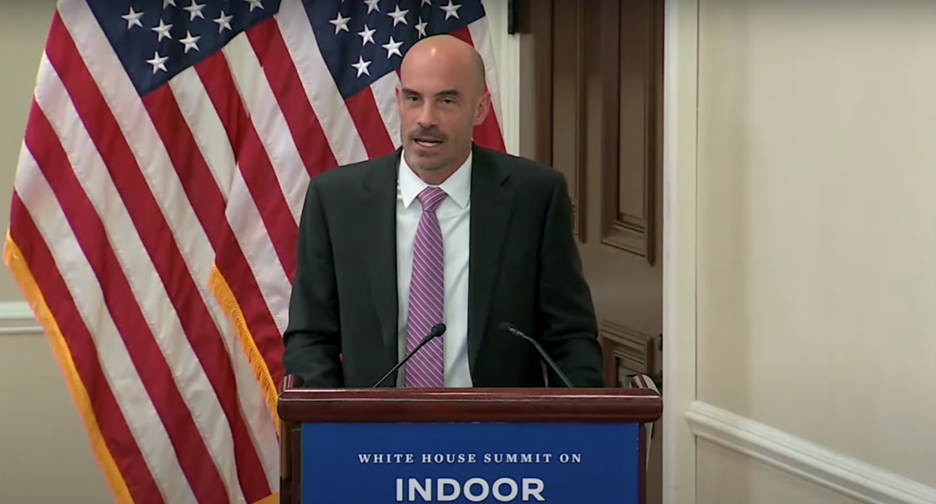Dr. Joseph Allen Presenting at White House Summit on Indoor Air Quality

(Picture: The White House. Watch the full summit on the White House’s YouTube channel.)
October 11, 2022 – Dr. Joseph Allen, associate professor for exposure assessment science and director of the Healthy Buildings program at Harvard T.H. Chan School of Public Health, was a guest panelist at the first White House Summit on Indoor Air Quality (IAQ). The summit underlined the relevance of IAQ for public health and human well-being.
The COVID-19 pandemic has elevated the importance of IAQ since airborne transmission is the dominant exposure pathway for SARS-CoV-2. Therefore, the White House identified improved IAQ as a key tool to fight the spread of COVID-19 and other respiratory infectious diseases. In March 2021, the Biden Administration launched the Clean Air in Buildings Challenge. The initiative calls leaders, building owners, schools, and organizations of all kinds to assess and improve the IAQ in buildings. As chair of the Lancet COVID-19 Commission’s Task Force on Safe Work, Safe School, and Safe Travel, and advisor to national and state leaders, Dr. Joseph Allen has been emphasizing the foundational role that buildings must play in our response since the beginning of the pandemic.
About the First White House Summit on Indoor Air Quality
The summit is another important milestone in the White House’s plan to create awareness and advance IAQ. Public health and ventilation experts together with private sector and education leaders as well as other stakeholders discussed collective efforts to improve IAQ in buildings and engage business leaders, schools, and other organizations for the common goal of improving public health. In his speech opening the event, Dr. Joseph Allen advocated that buildings should be the first line of defense to reduce the spread of respiratory viruses: “The case for airborne transmission is airtight. Nearly all spread indoors happen in underventilated spaces.”
Healthy Buildings for Healthy Communities
Healthy living is often associated with regular exercise or healthy eating. What is forgotten is that people spend up to 90% of their lives indoors. Therefore, healthy buildings play a critical role for healthy communities. The recent COVID-19 pandemic proved that many buildings are not yet designed or operated with a focus on health or respiratory infection control.
Therefore, building owners and operators can start by following Lancet guidance on “The First Four Healthy Building Strategies Every Building Should Pursue”:
- Give building a tune-up
- Maximize outdoor ventilation
- Upgrade filtration
- Install air cleaners
In addition, IAQ monitoring should become the new norm in every building. In the same way we measure the temperature in buildings, the IAQ can be monitored with real-time sensor technology.
Besides the measures listed above, there are several other factors that make up healthy buildings. Learn more about “The 9 Foundation of a Healthy Building” and discover the Healthy Buildings team’s research in the field of IAQ.





